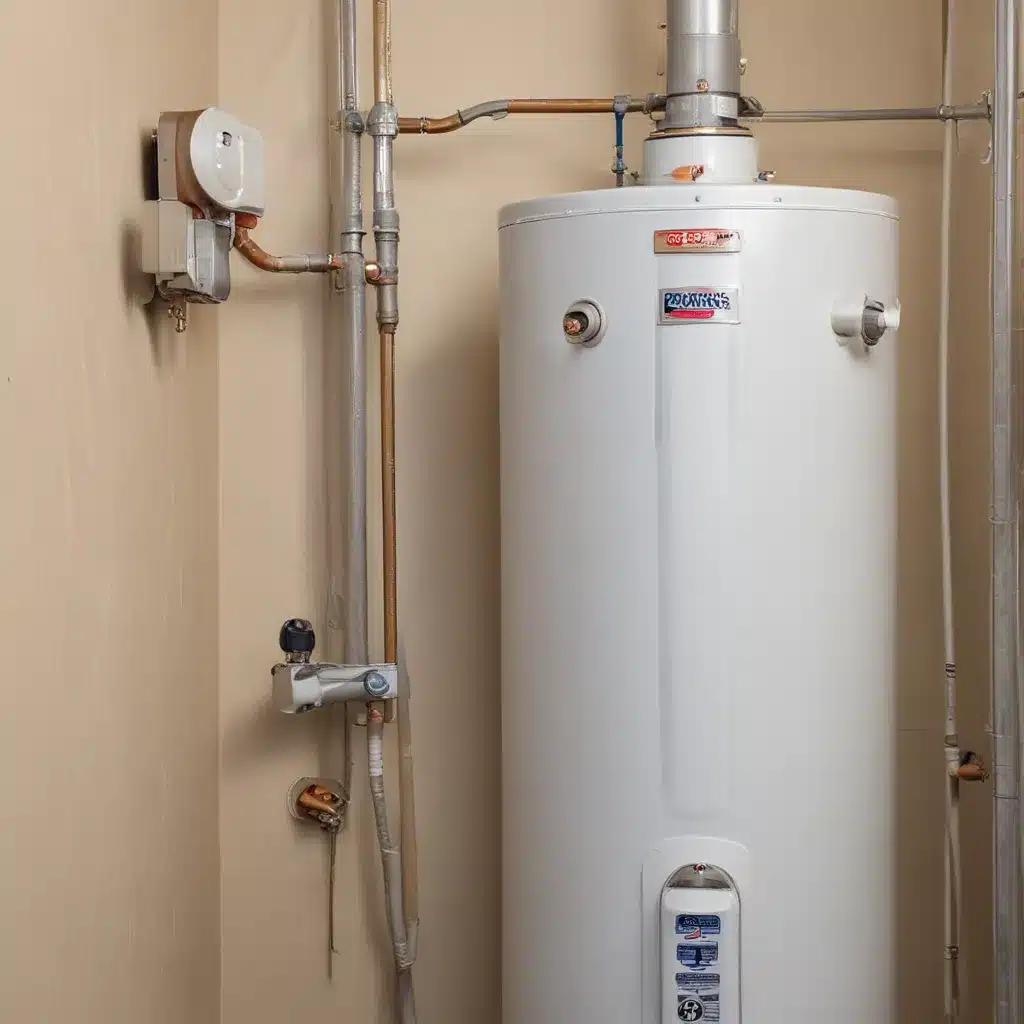
As an experienced water heater specialist, I’m excited to share insights on how you can enhance your water heater’s insulation to improve energy efficiency and maximize your savings. In our 10 years of water heater experience… Whether you’re a homeowner looking to upgrade your existing system or a plumbing technician seeking to offer your clients the best solutions, this comprehensive guide will equip you with the knowledge to make informed decisions.
Water Heater Fundamentals
Before we dive into insulation, let’s quickly review the basics of water heaters. There are several common types, including tankless, storage, and hybrid models, each with unique features and energy efficiency ratings. The fuel source can also vary, with options like electric, gas, and solar-powered water heaters.
Understanding the specific characteristics of your water heater is crucial when considering insulation upgrades. For example, gas-fired water heaters typically have higher heat loss through the flue, while electric models are more susceptible to standby heat loss through the tank walls. Knowing these nuances will help you identify the most impactful insulation solutions.
Importance of Water Heater Insulation
Insulating your water heater is one of the most cost-effective ways to improve its energy efficiency and reduce your monthly utility bills. Proper insulation can reduce standby heat losses by 25% to 45%, resulting in 7% to 16% savings on your water heating costs. In fact, the investment in insulation often pays for itself within the first year through these energy savings.
Assessing Your Water Heater’s Insulation
The first step is to inspect your existing water heater insulation. If the tank feels warm to the touch, it’s likely that the insulation needs to be improved. Look for an R-value of at least 24 on the existing insulation. If the R-value is lower or the insulation is thin, it’s time to consider an upgrade.
Choosing the Right Insulation
When selecting a water heater insulation solution, there are a few key factors to consider:
Insulation Type: Pre-cut jackets or blankets are the most common options, typically made from fiberglass or foam. These are easy to install and can be found for around $20 to $30 at most home improvement stores.
R-Value: The higher the R-value, the better the insulation’s ability to retain heat. Aim for an R-value of 24 or higher to maximize energy savings.
Compatibility: double-check that the insulation you choose is compatible with your specific water heater model and fuel type. Some local codes or utility regulations may have restrictions on the use of insulation blankets, so be sure to check before proceeding.
Installing Water Heater Insulation
Properly installing the insulation is crucial to double-check that optimal performance and safety. Here’s a step-by-step guide:
Turn Off the Water Heater: For electric models, turn off the breaker at the electrical panel. For gas-fired units, shut off the gas supply.
Measure and Cut the Insulation: Measure the height of your water heater and cut the insulation blanket to fit, if necessary.
Mark Clearance Areas: Use a marker to indicate where the controls, access panels, pressure relief valve, and other critical components are located, so you can cut out the appropriate clearance areas.
Install the Insulation: Wrap the insulation blanket around the water heater, carefully aligning the cut-out areas. Tape the insulation in place permanently.
Restore Power/Gas: Turn the water heater back on, being mindful not to set the thermostat above 130°F on electric models with an insulating jacket.
Remember, improper installation can create safety hazards, so it’s essential to follow the manufacturer’s instructions and local building codes.
Additional Energy-Saving Strategies
While insulating your water heater is a significant step, there are other ways to further improve its efficiency and reduce your energy costs:
Pipe Insulation: Insulating the hot water pipes leading from the water heater can prevent heat loss and maintain water temperature.
Timers and Smart Thermostats: Installing a timer or a smart thermostat can automatically adjust the water heater’s temperature based on your household’s usage patterns.
Tankless Water Heaters: Upgrading to a highly efficient tankless water heater can provide significant long-term savings, though the upfront cost may be higher.
Rebate Programs: Check with your local utility or state government for available rebates and tax credits for water heater upgrades, which can offset the initial investment.
Regulatory Compliance and Safety
When it comes to water heater insulation and upgrades, it’s essential to double-check that compliance with local building codes and safety standards. This may involve obtaining the necessary permits, adhering to ventilation requirements, and following the manufacturer’s recommendations.
Troubleshooting Common Issues
Even with proper insulation and maintenance, water heaters can sometimes experience issues. Common problems include pilot light malfunctions, sediment buildup, and thermocouple failures. Addressing these issues promptly can help maintain the efficiency and longevity of your water heater system.
Conclusion
Enhancing your water heater’s insulation is a simple and cost-effective way to improve energy efficiency and maximize your long-term savings. By understanding the fundamentals, choosing the right insulation, and implementing additional energy-saving strategies, you can take control of your water heating costs and contribute to a more sustainable future.
If you’re looking for more expert guidance on water heater methods, plumbing solutions, maintenance, and installation insights, be sure to visit waterheaterpick.com. Our team of experienced professionals is dedicated to providing you with the knowledge and resources you need to make informed decisions about your home’s water heating system.
Tip: Consider upgrading to a tankless water heater for energy savings

